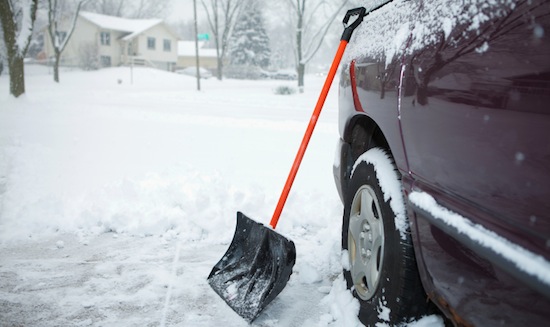Baby, it’s Cold Outside: Preparing Your Car for Winter
December 5, 2011
When the weather takes a turn for the worse, you make sure your kids are ready to brave the elements before they leave the house. You know the drill by heart—winter coat, hat, gloves, scarves and boots. Don’t forget a goodbye kiss with a reminder to be careful, walk slowly and don’t stay outside too long.
But what about your car? It too needs attention before it’s ready for the cold weather and slippery roads. Here are some things you can do to prepare your vehicle for safe driving during the winter.
Check the Tires and Battery
Your vehicle’s tires are all that protect you and your family from the dangers of slick and icy roads. Make sure they have the right air pressure (your spare tire, too), since improperly inflated tires are more susceptible to skidding. Ensure your battery’s posts and connections are corrosion-free. If your battery is more than three years old, have a certified repair shop test its ability to hold a charge.
Use the Right Oil
Oil tends to thicken as it gets colder, and if it’s too thick it won’t be as effective in keeping your engine lubricated. Your owner’s manual can tell you which oil is best for your climate in the winter months.
Keep an Emergency Kit on Hand
This is even more important if you’ll be travelling through areas where it might snow. Your emergency winter kit can include blankets; warm clothing; sand, cat litter or traction mats; a small shovel; a flashlight with fresh batteries; warning flares or triangles; drinking water; and anything else you might need in case you get stranded.
Go 50-50 on the Antifreeze
According to Edmunds.com, a 50-50 mix of antifreeze (coolant) and water inside your radiator will help prevent freezing, even at extremely cold temperatures. If your mixture is off, your cooling system should be drained and refilled or flushed.
Keep Your Tank Full
When the tank is nearly empty, a temperature shift can cause condensation on its walls. If this water drips into the gas and eventually the fuel lines, it can freeze up and block the flow of gas to the engine.
Warm up the Engine
In cold weather, start your car two to three minutes before you plan to drive it, since racing a cold engine can cause damage. When starting a car on wet, icy or snow-covered pavement, use a light but steady touch on the gas pedal and ease off if your wheels start to spin.
One last thing before you go: Monitor weather forecasts (on the Web, radio, TV or newspapers) and avoid driving in storms or other hazardous conditions. No matter how well you winterize your car, sometimes it’s best for you and your family to stay safe and warm in your own home.
Disclaimer: The author is affiliated with Allstate Car Insurance. SocialMoms was not compensated in any way for this article. This article was edited by SocialMoms staff to meet our editorial and quality guidelines.






